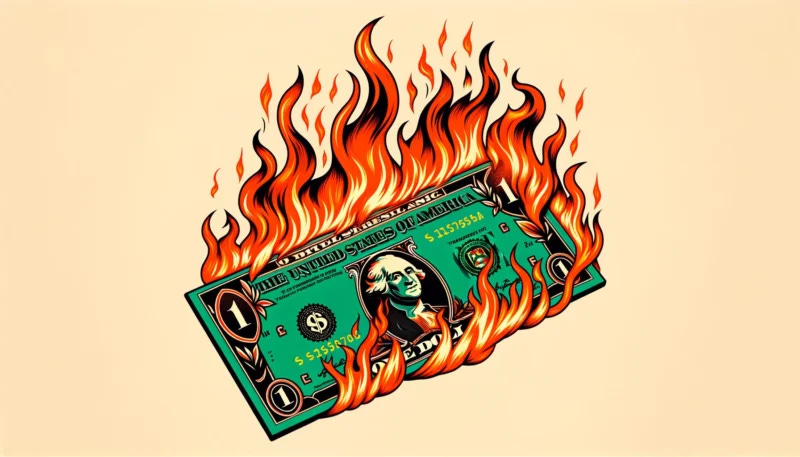Why it matters:
De-dollarization—the global movement to reduce reliance on the US dollar—is quietly reshaping the international financial system. While often viewed as a political or economic shift, it carries strategic benefits that are becoming clearer by the day (Babypips.com, 2023).
What’s happening:
Nations are rethinking their dependence on the dollar as the dominant reserve currency, medium of exchange, and unit of account. As of July 2025, this trend is driven by three underrated but powerful incentives:
Weakening US monetary influence
Diversifying global financial risks
Evading the weaponization of the dollar
Let’s break it down.
1. Less US Control Over Global Monetary Policy
The backdrop:
The US dollar’s global dominance, established after WWII, gives Washington unique power to influence international markets.
The Council on Foreign Relations (2023) explains that this “centrality” lets the US borrow easily and impose financial sanctions.
But it also means other countries are exposed to US interest rate policies, which can cause destabilizing ripple effects.
The evidence:
Take the 2013 “taper tantrum.” When the US Fed signalled a reduction in bond purchases:
Treasury yields spiked
Capital fled emerging markets
India and Indonesia saw sharp currency depreciation and financial chaos (Dallas Fed, 2021)
Why it matters:
According to Investopedia (2019), US rate hikes strengthen the dollar, hurting global trade balances, boosting US capital inflows, and putting pressure on other economies.
How de-dollarization helps:
Diversifying into other currencies would:
Limit exposure to US rate hikes
Reduce volatility in emerging markets
Foster monetary independence
The taper tantrum’s impact on emerging markets underscores the need for diversification (The Galactic Advisors, 2020).
2. Diversification = Greater Global Stability
What’s changing:
Relying too heavily on one currency exposes countries to unnecessary risk.
The Brookings Institution (2024) notes that countries are moving reserves into currencies like the Canadian and Australian dollars and China’s renminbi.
HSBC (2024) reports a shift toward smaller, stable economies for currency diversification.
Gold is making a comeback:
43% of central banks plan to increase their gold reserves this year (World Gold Council, 2025)
Poland led in 2024 with 21 tonnes added in November alone (NAI 500, 2025)
Big picture:
Gold’s rise and the decline in the dollar’s share of global reserves—from 54.8% to 48.2%—signals a serious shift (Atlantic Council, 2024).
Bitcoin?
Still speculative. While the Czech National Bank is considering it, the crypto’s volatility makes it a minor player for now (Reuters, 2025).
“Central banks prioritize stability—Bitcoin has yet to earn their full trust.”
3. Escaping US Sanctions
The issue:
The US utilizes its dollar dominance as a foreign policy tool. By controlling access to the global payments system, it enforces sanctions that can economically isolate countries.
South China Morning Post (2020): The US blocked access for nations like Iran and Russia.
Council on Foreign Relations (2023): This control extends far beyond America’s borders.
The global response:
After Russia’s 2022 invasion of Ukraine:
95% of Russia-China trade is now in rubles or yuan (US News, 2025)
Russia sells oil in local or friendly currencies, with India, China, and Turkey leading the way (J.P. Morgan, 2025)
Bangladesh paid for a Russian nuclear plant in yuan—a clear break from dollar norms (J.P. Morgan, 2025)
The mechanics:
Countries are forming bilateral currency swap lines to trade directly, bypassing the dollar (Atlantic Council, 2023)
The Tricontinental (2024) notes that sanctions on Russia have made many rethink holding dollar-denominated assets
What this means:
Reducing dollar use weakens the reach of US sanctions, giving countries more freedom and lowering the political risk of US monetary dominance.
“De-dollarization may not topple the dollar—but it does chip away at its weaponization.”
The Bottom Line
De-dollarization is no longer just a fringe idea—it’s a measured, strategic response to growing concerns over financial sovereignty, economic risk, and political control.
It gives countries more control over their own monetary policies
It spreads financial risk across multiple assets and currencies
It challenges the US’s ability to dictate global economic terms
What’s next:
While the US dollar remains the world’s most important currency, its grip is loosening. The future may not be fully post-dollar, but it’s increasingly post-dollar-dominance.

